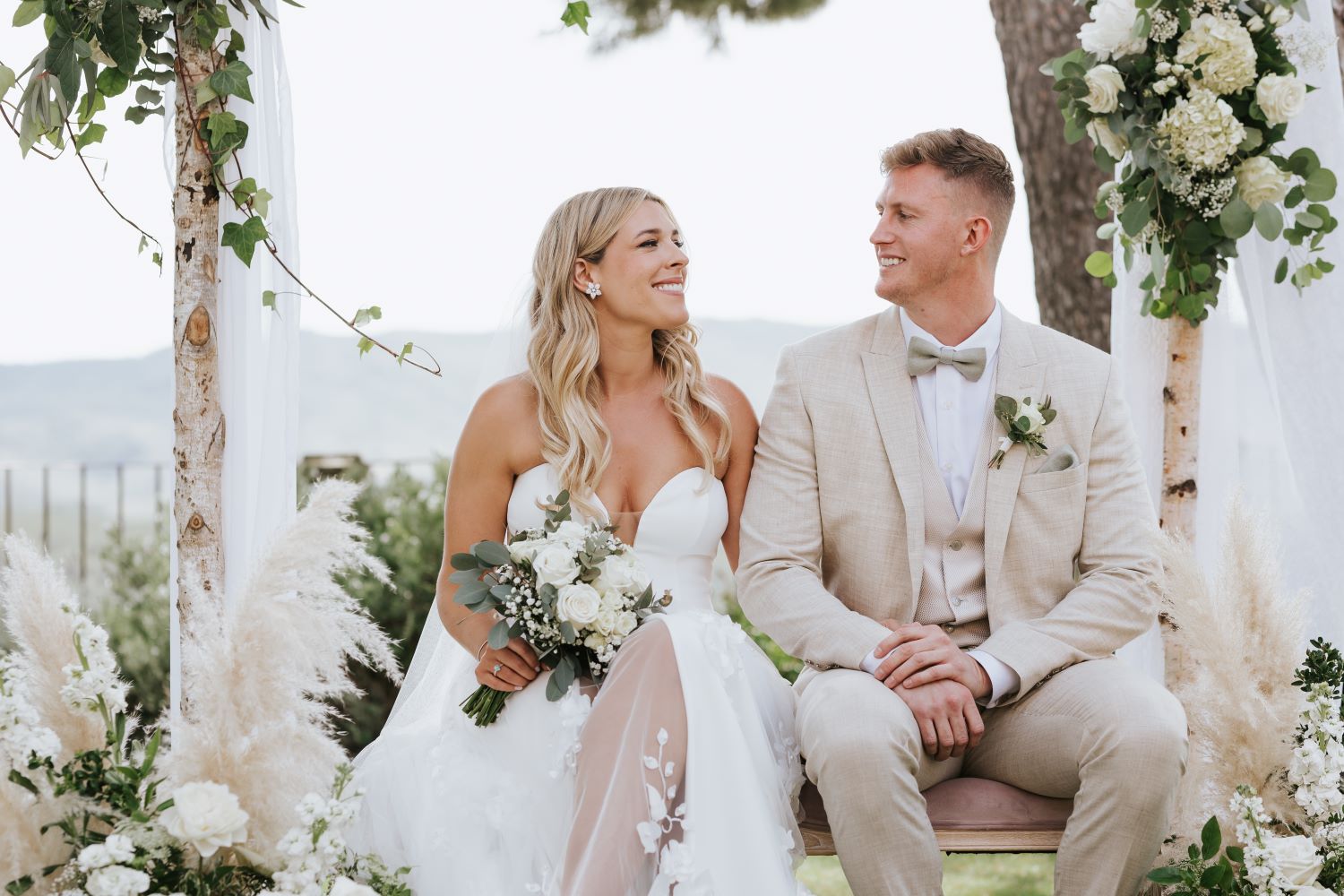If you’re engaged and already have a date and venue for your wedding, it’s time to start thinking about the ceremony. The ceremony is one of the most significant parts of the wedding, if not the most important, as it’s the moment where the marriage or union of the couple is officially celebrated.
There are two main types of ceremonies: a civil ceremony or a religious ceremony held in a church.
The option you choose will depend on the kind of wedding you want to organize and the venue. While both share many similarities, if you opt for a civil ceremony, this article explains the key aspects to consider, offers a possible structure for a civil ceremony script, and provides tips to make your ceremony unique.
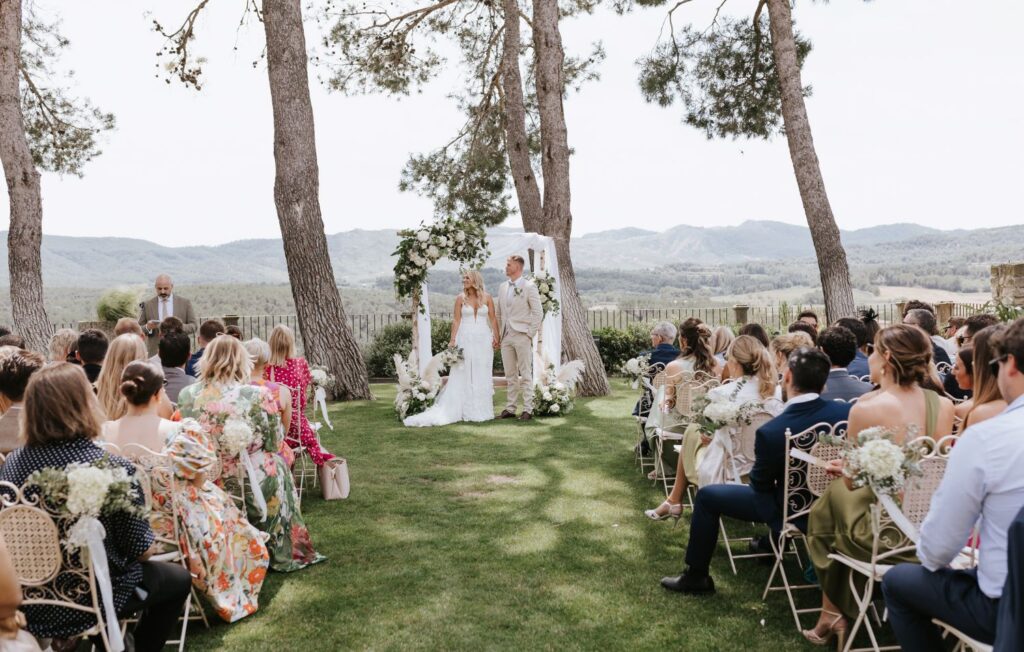
by Elm.Murcia Photography
Legal procedures for a civil ceremony wedding
To hold a civil ceremony, it’s essential to complete the legal process to officiate the marriage. In Spain this procedure must be initiated at the City Hall or Civil Registry Office where you’re registered. These steps should typically begin about a year before the wedding—earlier is unnecessary as some required documents expire after one year. Once the process has started, you can transfer the file to the City Hall or location where you plan to get married.
Keep in mind that to officiate the marriage legally, it must be conducted at City Hall, a Court, or a Notary’s office. In most cases, legal ceremonies cannot take place at the farmhouse or venue where you’re holding your celebration.
What many couples do is hold the legal ceremony at City Hall or Court a few days before the wedding (for signing the documents), then have a symbolic civil ceremony with an officiant or master of ceremonies on the wedding day.
This symbolic civil ceremony at the venue is where you can incorporate the more aesthetic and meaningful elements of the ceremony: the couple’s entrance, readings by friends and family, marriage vows, the “I do,” exchange of rings, etc.
The role of the officiant
For the official ceremony at City Hall or the Court, the officiant will be the mayor, a council member, or someone with the authority to legally officiate the marriage.
If you’re holding a symbolic civil ceremony at the venue, you’ll need a master of ceremonies to guide the proceedings.
The master of ceremonies can be a friend or family member who is comfortable speaking in public and knows your story, or you can hire a professional officiant. You’ll find plenty of options by searching for “wedding ceremony officiants”, “masters of ceremonies” or similar terms. What matters most is that you feel comfortable with the person you choose.
Whether you select a loved one or a professional, you’ll work with them to create a script tailored to your preferences and vision for the ceremony.
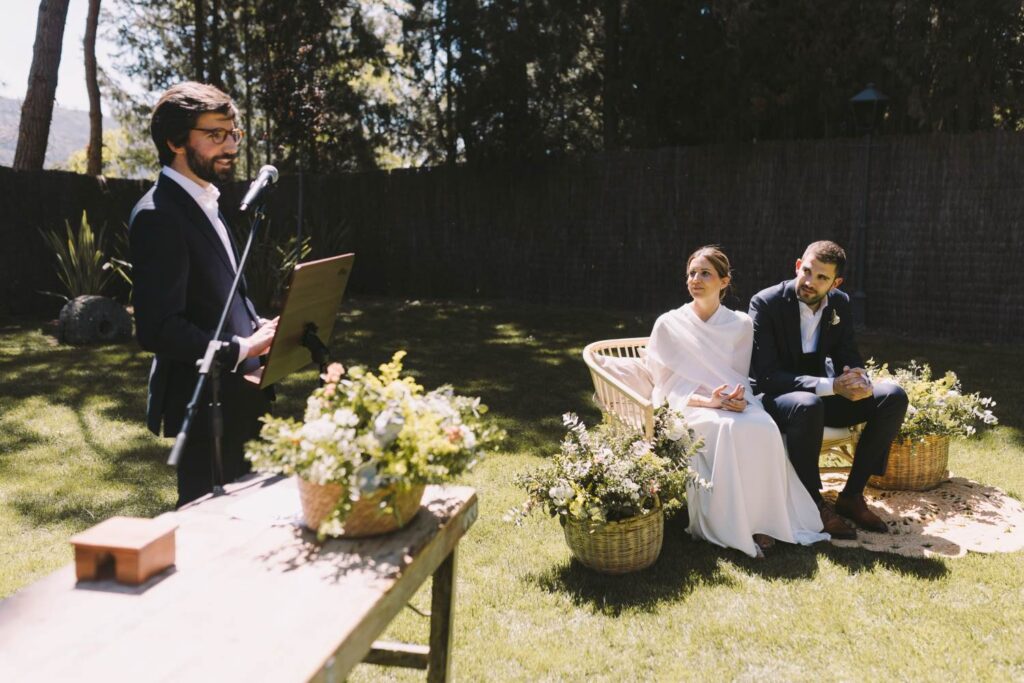
by Laura Chacón Photography
Structure of a civil ceremony script
Here’s a potential structure for a civil ceremony:
- Couple’s entrance
- Welcome
- Couple’s story
- Readings by friends and family
- Reading of civil code articles
- Wedding vows
- Consent: The “I do”
- Exchange of rings
- Kiss
- Signing of the symbolic act
- Flower petal toss
Let’s see in detail every part:
1. Couple’s entrance
Once all the guests are seated, the magic of the ceremony begins with the entrance of the couple.
Traditionally, the groom enters first, often accompanied by his mother. However, there are no strict rules—he can enter with whomever he wishes. In some weddings, especially Anglo-Saxon ones, the groom skips a formal entrance and waits for the bride at the altar.
Before the bride’s entrance, there may also be a procession of groomsmen, bridesmaids, flower girls, etc.
Finally, the bride enters, typically accompanied by her father, though she can choose anyone or even walk in alone. Some couples choose to enter together or with two companions.
Selecting a special song for the entrances is an exciting part of the planning process.
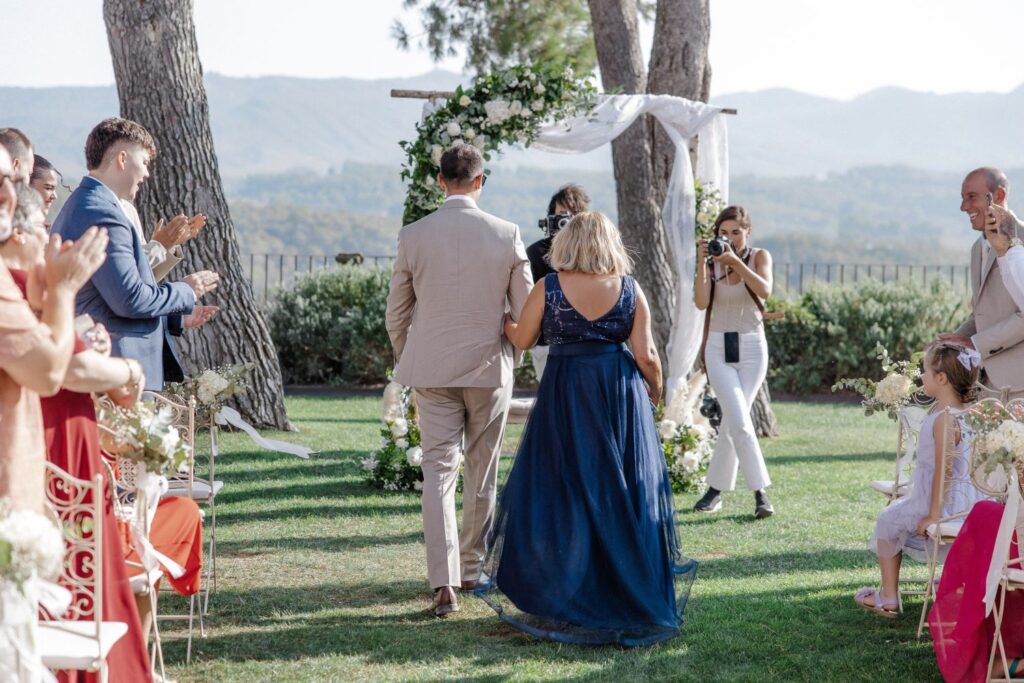
by Lorena Villarreal Fotografía y Ludmila Filippova
2. Welcome
Once the couple is present at the ceremony, the officiant or master of ceremonies will give a brief welcome and introduction to begin the event. For example, they may thank the guests for attending and explain the purpose of this important day: to celebrate the union of the couple in the presence of their loved ones.
3. The couple’s story
Following the welcome, the officiant usually shares a bit about the couple’s love story: how they met, memorable moments they’ve shared, their favorite activities, and their future plans.
Afterward, they may invite family and friends to share more intimate and personal stories about the couple.
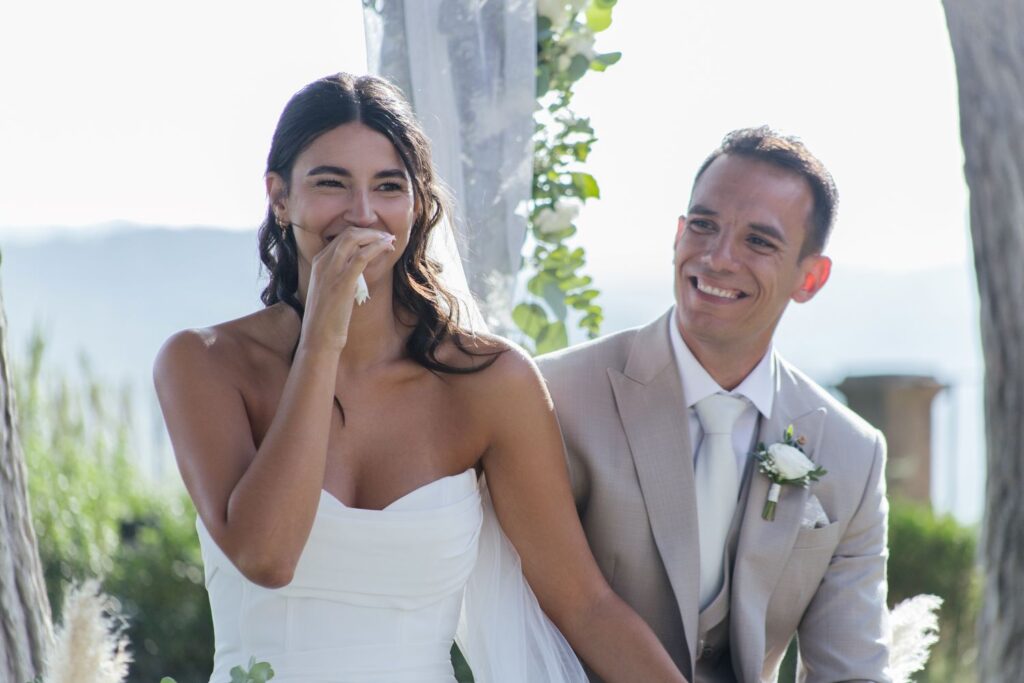
by Lorena Villarreal Fotografía and Ludmila Filippova
4. Readings by friends and family
While the officiant provides a general overview of your love story, this part allows your friends and family to add a more personal and heartfelt touch.
It’s recommended to have no more than four readings from different guests to ensure the ceremony doesn’t feel too lengthy.

by Lorena Villarreal Fotografía and Ludmila Filippova Photographer
5. Reading articles from the civil code
If your ceremony is symbolic, this step is entirely optional. The reading of articles from the Civil Code (articles 66, 67, and 68) is a formal requirement in legal civil ceremonies held at City Hall or the courthouse. However, some couples choose to include this part to give the ceremony a formal tone.
6. Wedding vows
One of the most emotional moments of the ceremony is when the couple exchanges their vows—words of love, respect, and commitment to each other.
If you’d like more tips on writing your vows, don’t miss our blog post: What are wedding vows and how to write yours
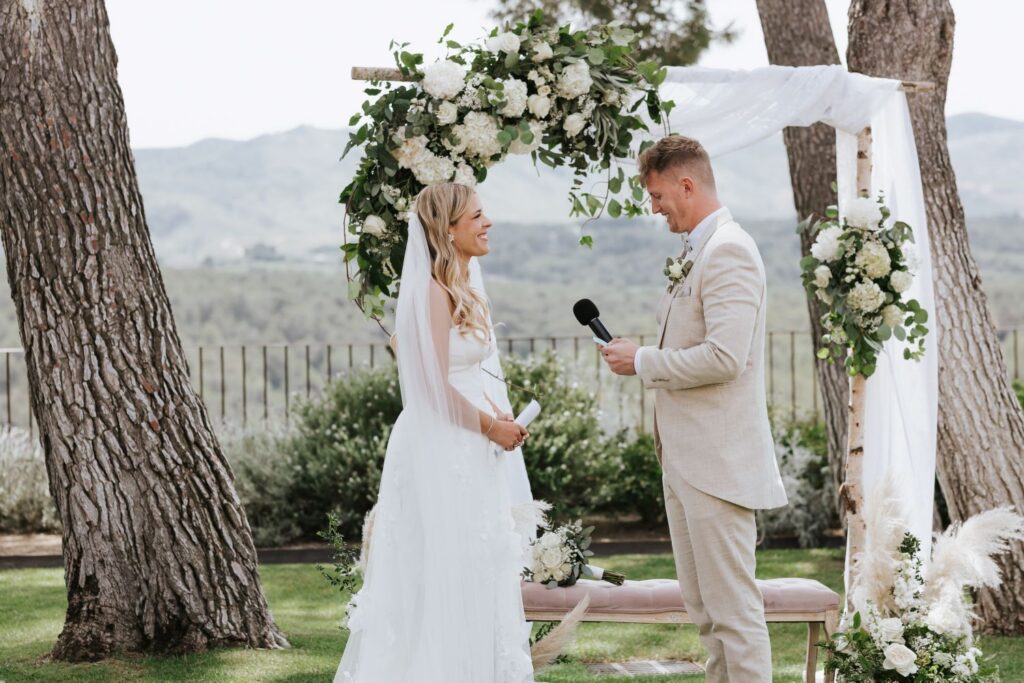
by Elm.Murcia Photography
7. Consent
The consent moment is when the couple says, “I do!”
The officiant will ask each partner whether they agree to marry their beloved. Here’s an example:
Officiant: (Partner’s name), do you take (Partner’s name) to be your spouse, and promise to remain faithful in good times and bad, in sickness and health, loving and respecting them all the days of your life?
Partner: I do.
Both partners will answer the same question in turn.
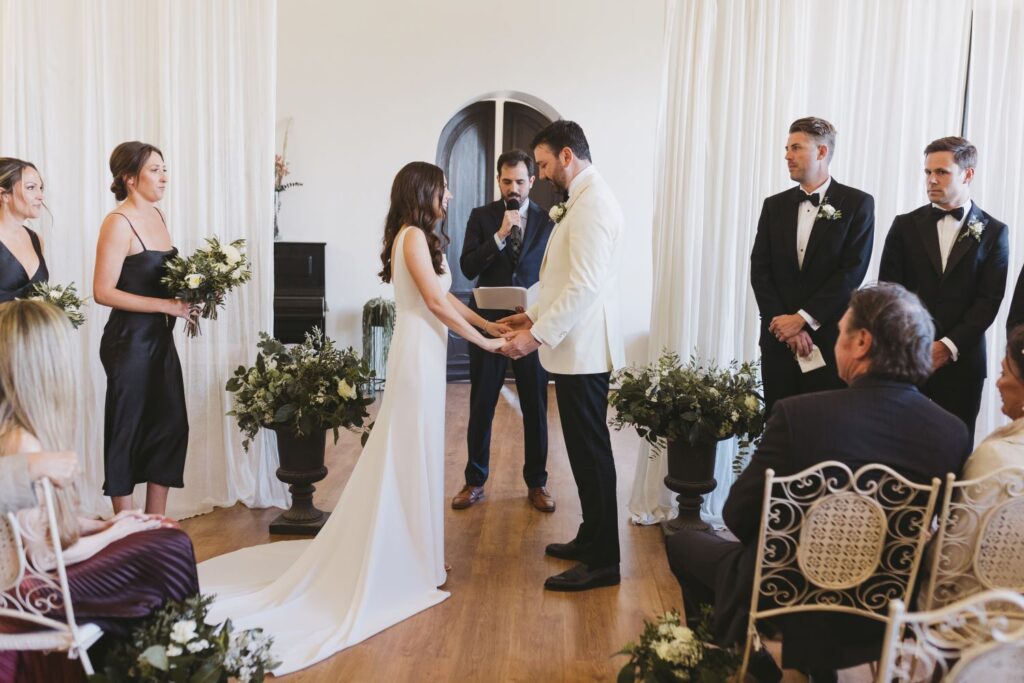
by Laura Chacón Photography
8. Exchange of rings
Immediately after the consent and just before the kiss, the couple exchanges rings, symbolizing their union in marriage.
The officiant will explain the significance of the rings and may invite a special guest (often a child) to bring them to the altar so the couple can exchange them.
If you’d like to explore more about this ritual, check out our blog post: The exchange of wedding rings
In addition to rings, some couples incorporate other rituals, such as the sand ceremony, beer or wine unity rituals, or handfasting. This is an excellent time to include such moments, either before or after the ring exchange.
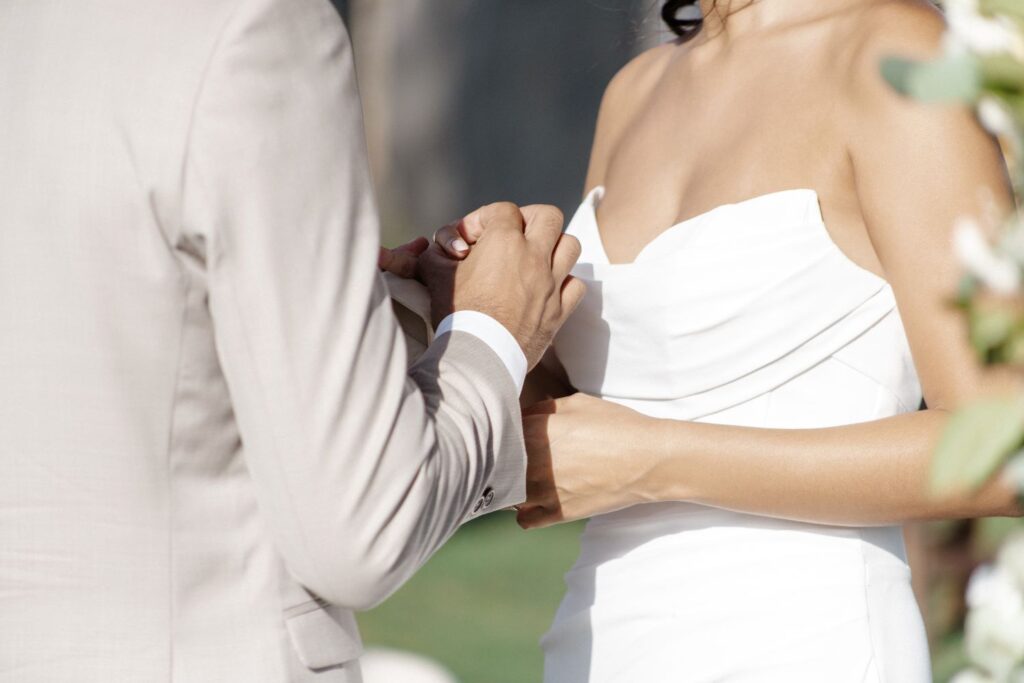
by Lorena Villarreal Fotografía and Ludmila Filippova
9. The kiss
After exchanging rings, the officiant will say a few final words, officially declare the couple married, and invite them to kiss. This is the most anticipated moment! Guests will cheer and shout, “Long live the newlyweds!”
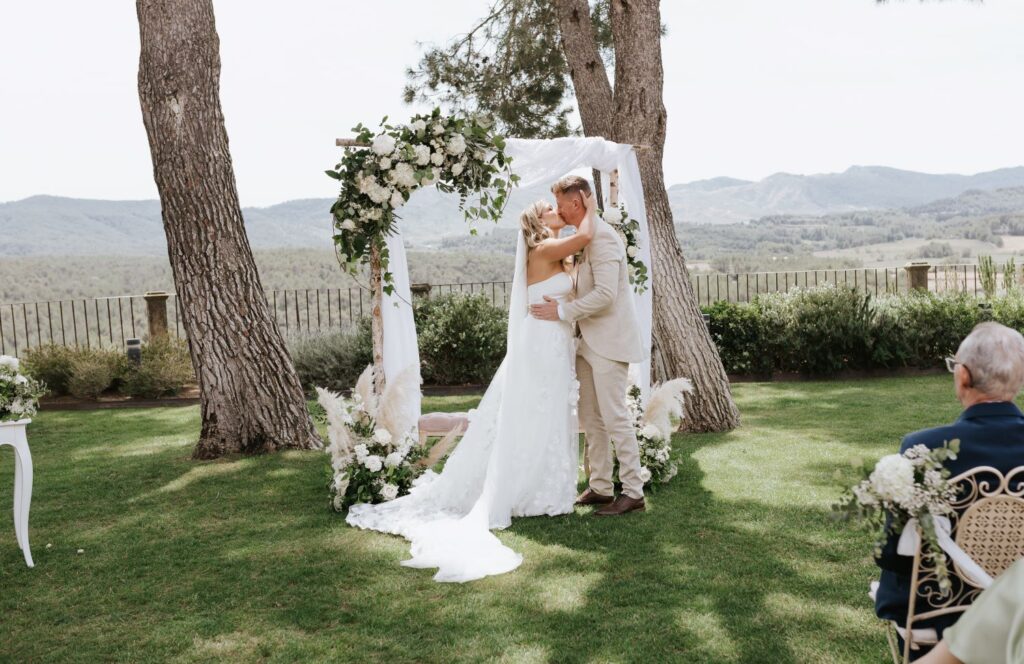
by Elm.Murcia Photography
10. Signing the ceremony record
At this point, the officiant will invite the couple and their witnesses to sign the ceremony record. Note that this step is optional, as the official marriage license is signed at City Hall or the courthouse. Nonetheless, many couples choose to sign a symbolic certificate with the wedding date during the ceremony.
11. Petal toss
While the couple and witnesses sign the record, the officiant can instruct the guests to form a corridor for the petal toss.
Once the couple is ready, their chosen music will play as they walk through the corridor, while guests toss petals—one of the most fun and joyful moments!
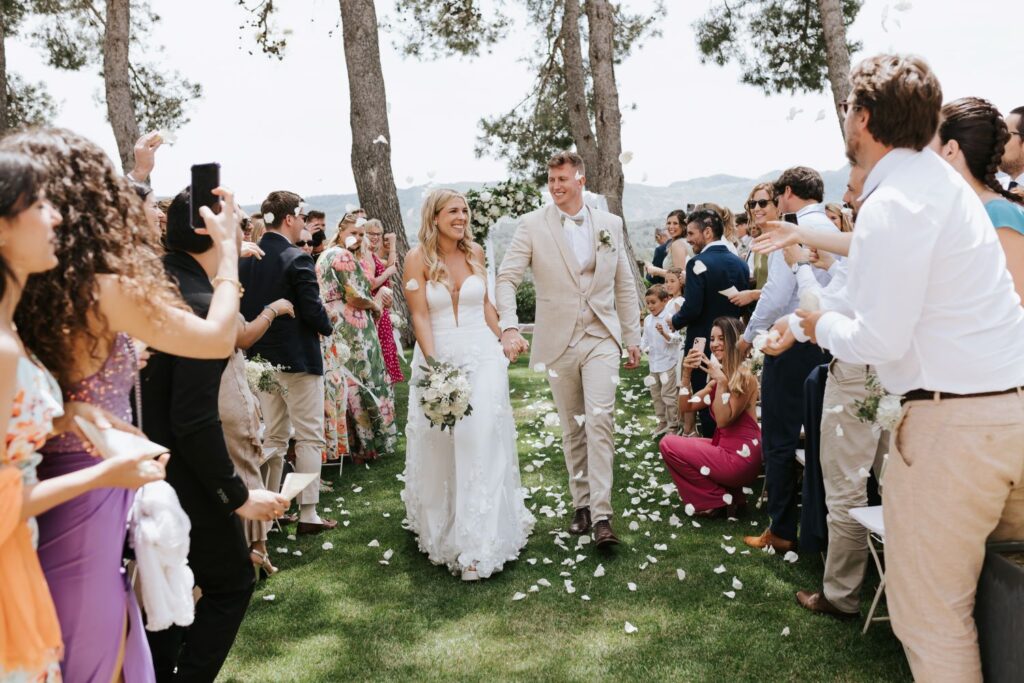
by Elm.Murcia Photography
This structure represents a typical civil ceremony script, but remember that your ceremony can be as unique as you like, especially if it’s symbolic. Feel free to personalize it: adjust the order, include special rituals, add or remove elements, and so on.
A typical ceremony lasts between 30 minutes and 1 hour.
Tips
Our tips for creating your ceremony script:
- Write a personalized script with your officiant that tells your story. Avoid using a generic template.
- Plan a ceremony lasting 30 to 60 minutes to keep it engaging and concise.
- Stay organized with a clear timeline: who’s reading, which songs are playing, who’s bringing the rings, etc.
- Choose an officiant you feel comfortable with. Whether it’s a professional or a friend, make sure they suit your style and the tone of the ceremony.
- Embrace the moment. Even with detailed planning, nerves, emotions, and unforeseen events can shift things. Stay flexible—it’s these moments that make your wedding uniquely yours.
